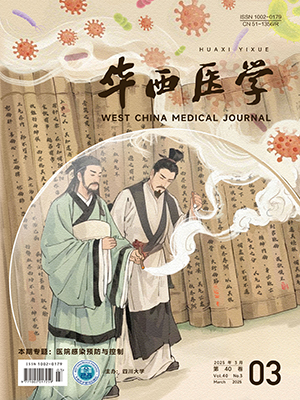| 1. |
Porter RN, Smith W, Craft IL, et al. Induction of ovulation for invitro fertilisation using buserelin and gonadotropins[J]. Lancet, 1984, 2(8414): 1284-1285.
|
| 2. |
Papanikolaou EG, Kolibianakis EM, Pozzobon C, et al. Progesterone rise on the day of human chorionic gonadotropin administration impairs pregnancy outcome in day 3 single-embryo transfer, while has no effect on day 5 single blastocyst transfer[J]. Fertil Steril, 2009, 91(3): 949-952.
|
| 3. |
Fanchin R, Righini C, Olivennes F, et al. Consequences of premature progesterone elevation on the outcome of in vitro fertilization: insights into a controversy[J]. Fertil Steril, 1997, 68(5): 799-805.
|
| 4. |
Kyrou D, Popovic-Todorovic B, Fatemi HM, et al. Does the estradiol level on the day of human chorionic gonadotrophin administration have an impact on pregnancy rates in patients treated with rec-FSH/GnRH antagonist?[J]. Hum Reprod, 2009, 24(11): 2902-2909.
|
| 5. |
Karligiotou E, Kollia P, Kallitsaris A, et al. Expression of human serum albumin (HSA) mRNA in human granulosa cells: potential correlation of the 95 amino acid long carboxyl terminal of HSA to gonadotrophin surge-attenuating factor[J]. Hum Reprod, 2006, 21(3): 645-650.
|
| 6. |
Shoham Z. The clinical therapeutic window for luteinizing hormone in controlled ovarian stimulation[J]. Fertil Steril, 2002, 77(6): 1170-1177.
|
| 7. |
Fleming R, Chung CC, Yates RW, et al. Purified urinary follicle stimulating hormone induces different hormone profiles compared with menotrophins, dependent upon the route of administration and endogenous luteinizing hormone activity[J]. Hum Reprod, 1996, 11(9): 1854-1858.
|
| 8. |
Wong PC, Qiao J, Ho C, et al. Current opinion on use of luteinizing hormone supplementation in assisted reproduction therapy: an Asian perspective[J]. Reprod Biomed Online, 2011, 23(1): 81-90.
|
| 9. |
Lahoud R,Al-Jefout M,Tyler J, et al. A relative reduction in mid-follicular LH concentrations during GnRH agonist IVF/ICSI cycles leads to lower live birth rates[J]. Hum Reprod, 2006, 21(10): 2645-2649.
|
| 10. |
Janssens RM, Vermeiden JP, Lambalk CB, et al. Gonadotrophin-releasing hormone agonist dose-dependency of pituitary desensitization during controlled ovarian hyperstimulation in IVF[J]. Hum Reprod, 1998, 13(9): 2386-2391.
|
| 11. |
朱文杰, 李雪梅, 陈秀敏, 等. 长方案中两种小剂量曲普瑞林对垂体降调节的效果研究[J]. 中国优生与遗传杂志, 2003, 11(4): 103-105.
|
| 12. |
Cambiaghi AS, Leao RBF, Castellotti DS, et al. Triptorelin every other day can prevent premature LH surge: a strategy to reduce the daily gonadotrophin-releasing hormone agonists injections[J]. Fertil and Steril, 2011, 96( Suppl 3): s175.
|
| 13. |
Huang R, Fang C, Xu SY, et al. Premature progesterone rise negatively correlated with live birth rate in IVF cycles with GnRH agonist: an analysis of 2,566 cycles[J]. Fertil Steril, 2012, 98(3): 664-U433.
|
| 14. |
Bosch E, Labarta E, Crespo J, et al. Circulating progesterone levels and ongoing pregnancy rates in controlled ovarian stimulation cycles for in vitro fertilization: analysis of over 4000 cycles[J]. Hum Reprod, 2010, 25(8): 2092-2100.
|
| 15. |
王玢, 孙海翔, 刘景瑜, 等. 适当延长GnRH-a降调节时间对卵泡发育同步性的影响[J]. 中华男科学杂志, 2011, 17(12): 1087-1091.
|
| 16. |
李静, 闻姬, 孙伟, 等. 促性腺激素用药前垂体降调节时间对妊娠结局的影响[J]. 实用医学杂志, 2008, 24(9): 1530-1532.
|
| 17. |
王玢, 孙海翔, 刘景瑜, 等. 长方案垂体降调节时间对卵泡发育的影响[J]. 生殖医学杂志, 2013, 22(10): 753-756.
|
| 18. |
Ferraretti AP, Gianaroli L, Magli MC, et al. Exogenous luteinizing hormone in controlled ovarian hyperstimulation for assisted reproduction techniques[J]. Fertil Steril, 2004, 82(6): 1521-1526.
|




